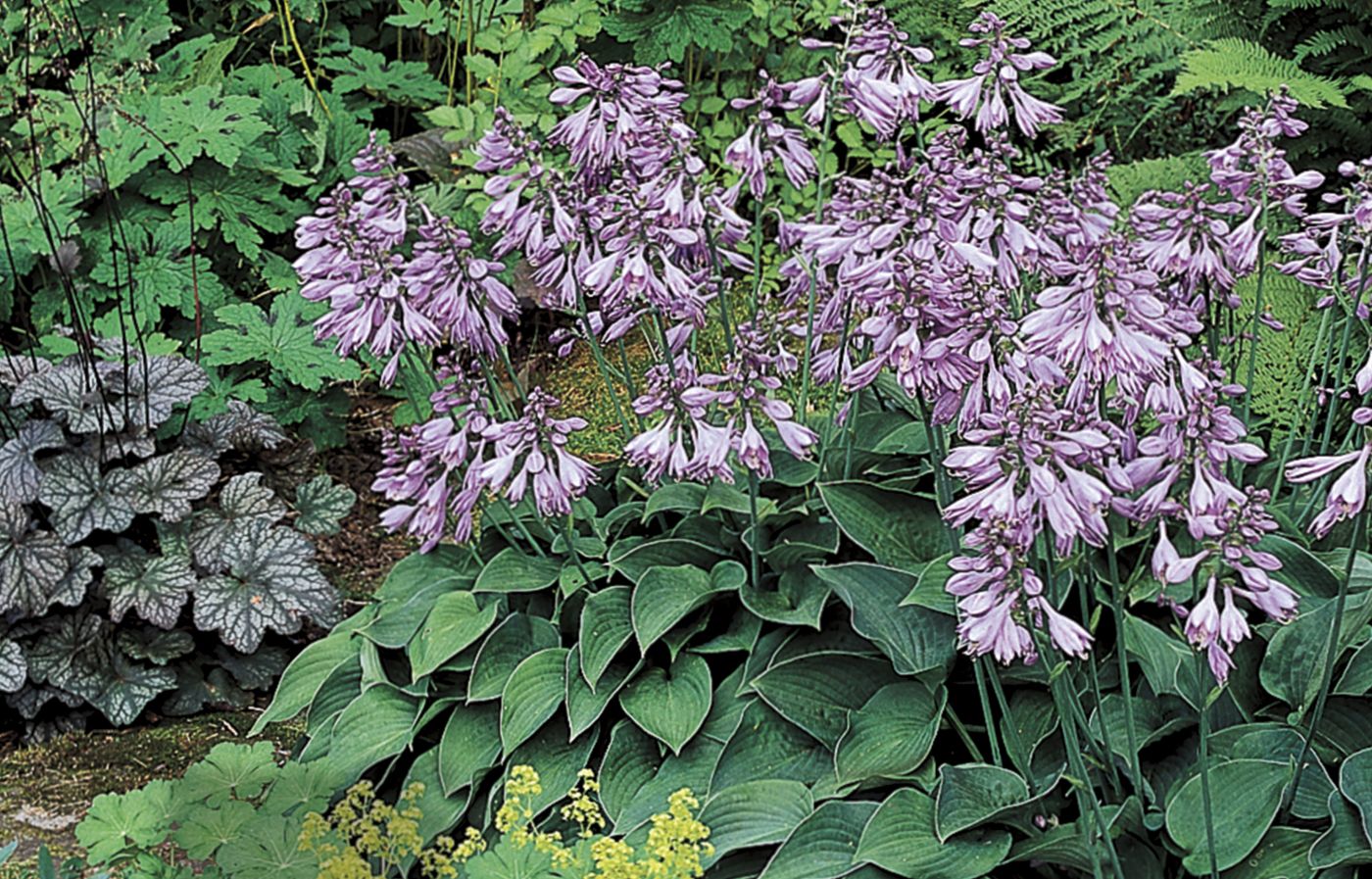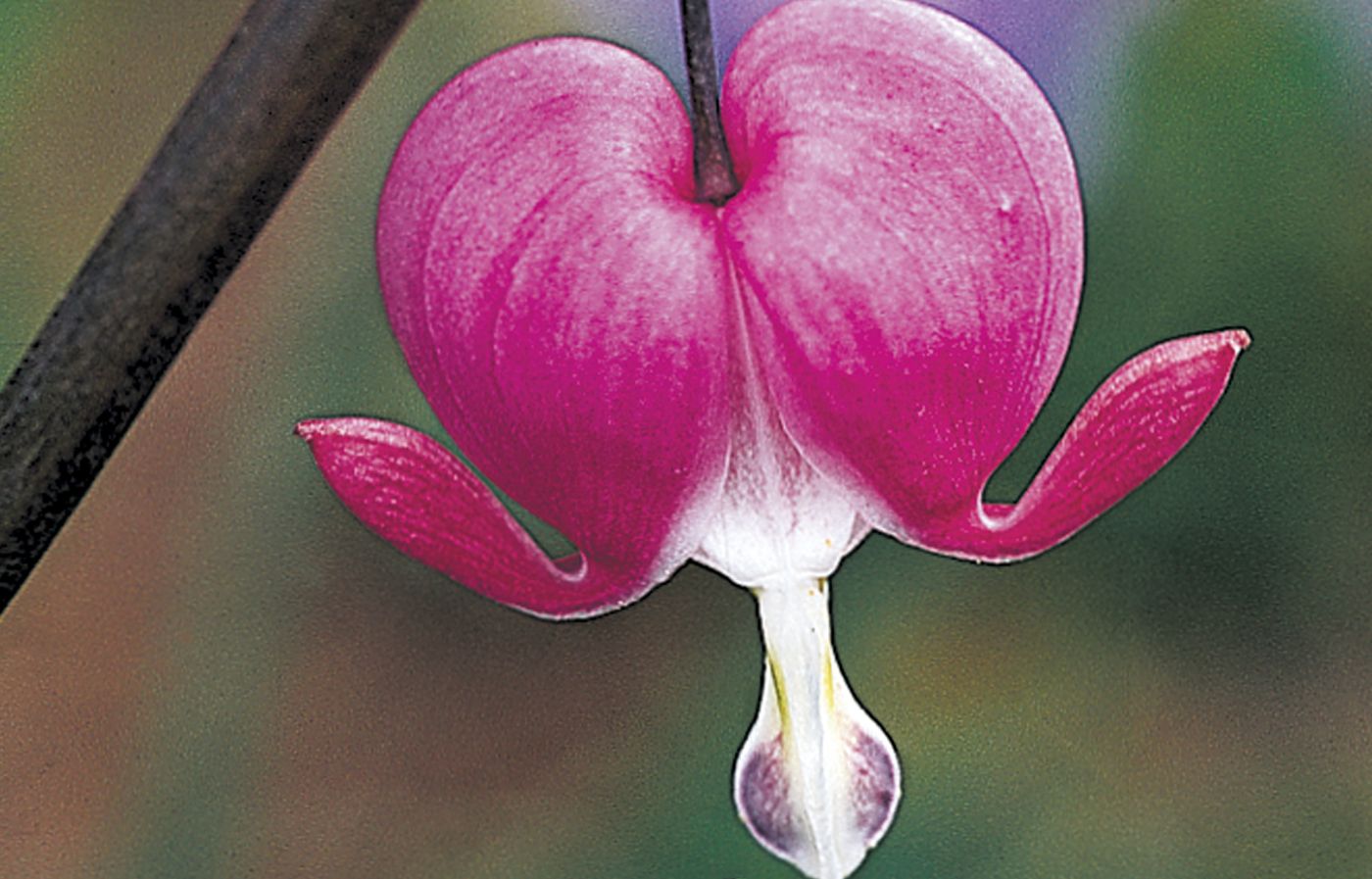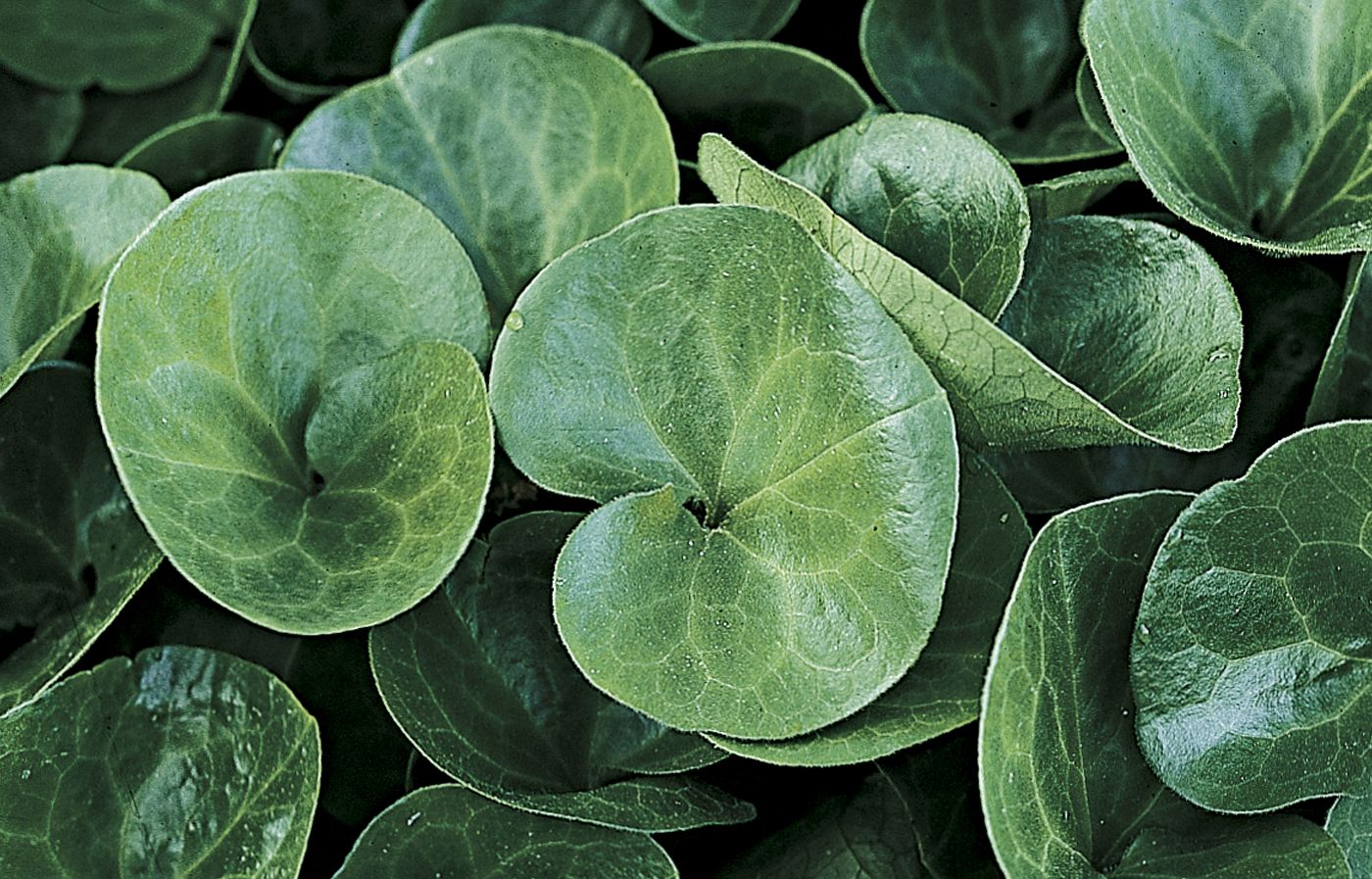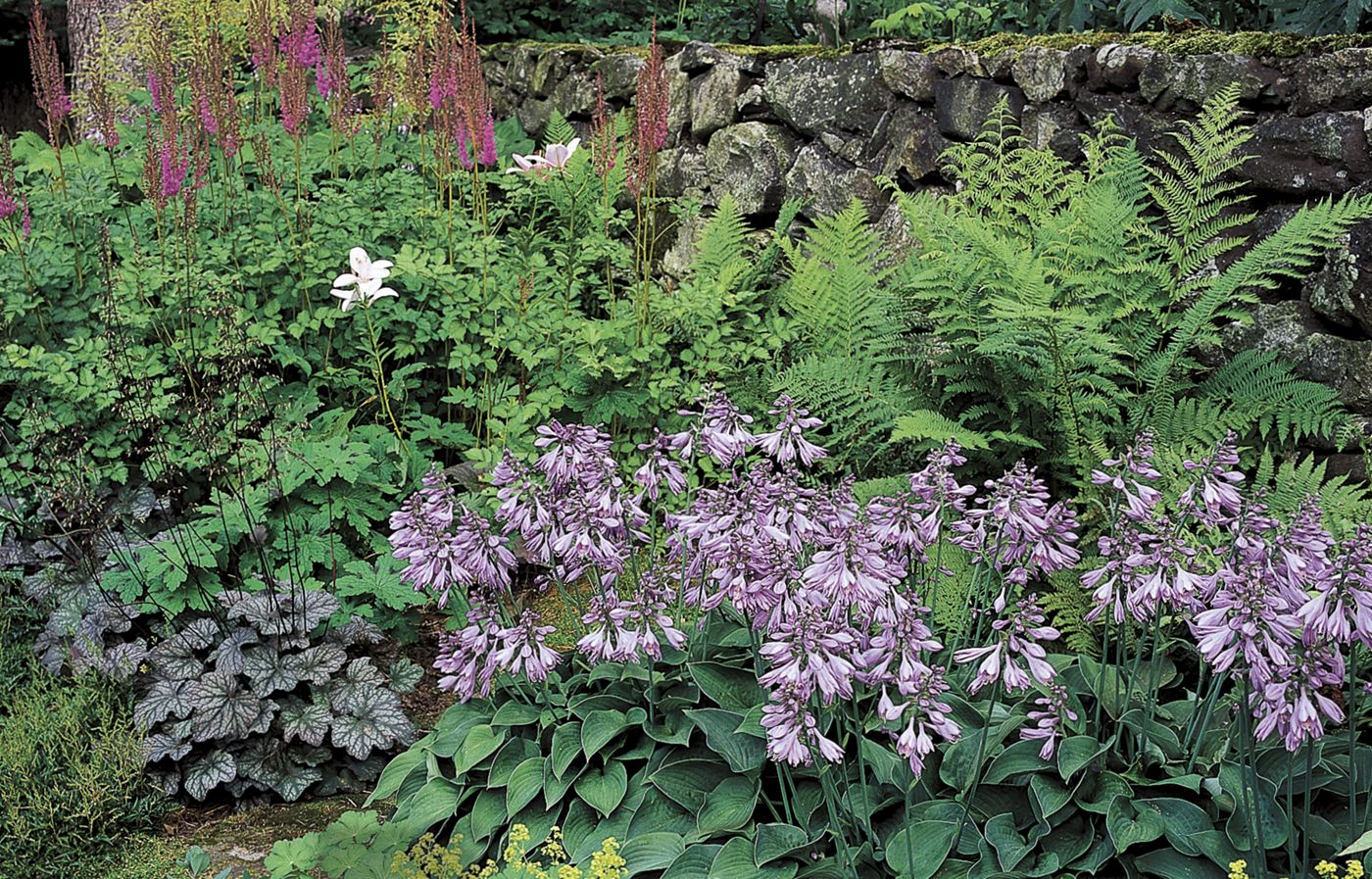Creating a beautiful landscape in shady areas is challenging, but not impossible. With the right plants and design strategies, you can transform those dim corners of your yard into lush, vibrant spaces. This guide will explore the art of shade gardening—from understanding different shade types to choosing and planting the perfect plants—and outline how to maintain your low-light oasis. Whether you’re dealing with dappled sunlight or deep shade, we’ll show you how to make the most of your garden’s shady spots.
What is Shade Gardening?
Shade gardening is the practice of cultivating plants in areas that receive little or no direct sunlight. These spaces are often overlooked or problematic for gardeners but offer unique opportunities. Shade gardens can provide cool retreats during hot summers, support many interesting plants, and solve landscaping challenges in areas where sun-loving plants struggle.
“It’s not difficult to find interesting plants for shade,” says This Old House landscape contractor Roger Cook. “You just have to do your homework and find ones that are suited to your particular low-light conditions.” By embracing shade gardening, you can turn your outdoor space’s underutilized areas into stunning focal points.
Types of Garden Shade: From Partial to Full
Understanding the different types of shade in your garden will help you choose the right plants. Let’s explore the main shade categories you might encounter in your landscape:
Partial Shade
Partial shade refers to areas that receive an average of three to five hours of direct sunlight every day. These spots receive a balance of light and shade, making them ideal for various plants. Partial shade might occur under trees with light canopies, in spots where houses or fences block the sun for most of the day, or in areas that receive only filtered sunlight throughout the day.
Plants suited for partial shade often have more flexibility in their light requirements and can tolerate periods of both sun and shade. This versatility makes partial-shade areas ideal for creating diverse and colorful garden spaces.
Full Shade
Full-shade areas receive two hours or less of direct sunlight each day. You might find full-shade areas under dense tree canopies, on the north sides of buildings, or in spaces surrounded by tall structures. While full shade might seem limiting, it offers opportunities to create serene, woodland-like gardens with unique plants that thrive in low-light conditions.
Full-shade gardens can be lush and inviting, featuring an array of textures and subtle color variations. With the right plant selection, these areas can become cool, peaceful retreats in your landscape.
Assessing Your Shade Garden: Soil, Light, and Moisture
Before planting, evaluate the conditions of your shade garden. This assessment will help you choose plants that are well-suited to your climate zone, soil, and overall environment.
Evaluating Soil Conditions
The soil in shady areas often has distinct characteristics that can affect plant growth. To test your soil’s moisture retention, try this simple method:
- Take a fistful of soil and squeeze it.
- If it holds its shape, it’s likely moist and suitable for most shade-loving plants.
- If it crumbles into powdery clumps, it’s dry—a condition often found under trees with dense foliage and extensive root systems.
Add organic matter like compost or manure to your soil to boost your shade garden’s health. This will help improve its structure and nutrient content and create an ideal growing environment for your shade plants.
Measuring Light Exposure
You need to accurately gauge the light your garden receives so you can choose the right plants. Watch your garden plot throughout the day to determine how much direct sunlight it gets. Remember that light conditions can change with the seasons, especially under trees.
You can use a light meter or smartphone app to measure light levels in different parts of your garden. This will help you choose plants suited to each area’s light conditions.
Managing Moisture Levels
Shade gardens often retain moisture better than sunny areas but that’s not always the case. Some shady spots, particularly those under large trees, can be dry due to root competition. Monitor your garden’s moisture levels regularly and adjust your watering schedule accordingly.
Use mulch to retain moisture and suppress weeds in your shade garden. Organic mulches like shredded leaves or bark can also improve soil quality as they break down over time.

Top Plants for Partial-Shade Gardens
Partial shade offers plenty of planting possibilities. Here are some great choices for flowers and foliage that thrive in areas with moderate light:
Flowers
- Astilbe (Astilbe): These feathery plumes in shades of pink, red, and white add vertical interest to partial-shade gardens. They bloom in early summer and grow 1–3 feet tall.
- Bleeding heart (Dicentra spectabilis): Known for its distinctive heart-shaped flowers, this spring-blooming perennial reaches up to 3 feet tall.
- Columbine (Aquilegia): These delicate, spurred flowers come in various colors and bloom in early spring. They grow up to 2 feet tall.
- Impatiens (Impatiens walleriana hybrids): These popular annuals offer continuous blooms in shades of pink, red, purple, and white throughout the summer.
- Pulmonaria or lungwort (Pulmonaria hybrids): With its spotted leaves and delicate flowers, this low-growing perennial makes an excellent ground cover for partial shade.
Foliage
- Coral bells (Heuchera): Prized for their colorful foliage, these low-growing perennials come in hues ranging from deep purple to lime green.
- Hakone grass (Hakonechloa macra): This graceful ornamental grass forms elegant mounds of arching leaves, often with variegated or golden coloration.
- Hosta (Hosta): A shade garden staple, hostas offer various leaf shapes, sizes, and colors. Some varieties also produce attractive flowers in the summer.
- Japanese painted fern (Athyrium niponicum): This fern’s silvery-gray fronds with purple highlights add a unique texture and color to partial-shade gardens.
- Spotted dead nettle (Lamium maculatum): This low-growing perennial features variegated leaves and delicate pink or purple flowers, making it an excellent ground cover option.

Best Plants for Full-Shade Areas
Full-shade areas require plants that can thrive with minimal direct sunlight. Here are some top choices for these low-light conditions.
Ground Covers
- Barrenwort (Epimedium grandiflorum): Also known as bishop’s hat, this low-growing perennial features delicate flowers and attractive foliage.
- Bugleweed (Ajuga reptans): This fast-spreading ground cover offers colorful foliage and produces blue flower spikes in the spring.
- Dwarf crested iris (Iris cristata): This native woodland plant produces charming blue or purple flowers in the spring.
- European wild ginger (Asarum europaeum): This evergreen ground cover forms a lush carpet of glossy, heart-shaped leaves.
- Woodland phlox (Phlox divaricata): This fragrant ground cover blooms with lavender flowers in the spring, adding color to shady areas.
Ferns
Ferns are quintessential shade plants, offering a range of textures and sizes for full-shade gardens. Here are some excellent choices:
- Christmas fern (Polystichum acrostichoides): This evergreen fern maintains its deep green color throughout the year and grows about 1–2 feet tall.
- Cinnamon fern (Osmunda cinnamomea): Known for its distinctive cinnamon-colored fertile fronds, this fern can reach up to 3 feet tall.
- Japanese painted fern (Athyrium niponicum ‘Pictum’): This fern’s silvery-gray fronds with purple highlights add unique color to shady spots.
- Maidenhair fern (Adiantum pedatum): This delicate fern features fine, lacy foliage on dark stems and grows to about 1–2 feet tall.
- Ostrich fern (Matteuccia struthiopteris): With its tall, arching fronds, this fern creates a dramatic backdrop in shade gardens and grows up to 5 feet tall.

Design Tips for Creating a Shade Garden
Designing a shade garden involves carefully considering plant selection, layout, and complementary elements. Here are some tips to help you create a captivating low-light landscape.
Using Color and Texture in Low-Light Spaces
In shade gardens with limited light, focus on foliage color and texture as follows:
- Incorporate plants with variegated or colorful leaves to brighten dark corners.
- Integrate plants such as white astilbe or the silvery foliage of Japanese painted ferns to add brightness. These plants stand out more in shady areas with their white or light-colored flowers.
- Mix plants with different leaf shapes and sizes to create visual interest.
Incorporating Hardscaping Elements
Hardscaping can significantly enhance your shade garden’s appeal. Consider including some of the following elements to add structure and create focal points:
- Arbors or trellises to support shade-tolerant climbing plants
- A small water feature, like a fountain or birdbath, to add sound and attract wildlife
- Decorative containers or planters to add height and color to your garden
- Garden benches or seating areas to create inviting spaces for relaxation
- Stone pathways or stepping stones to create visual interest and improve accessibility
Maintaining Your Shade Garden: Seasonal Care and Challenges
Proper maintenance will keep your shade garden healthy and vibrant throughout the year. Let’s explore the care requirements for different seasons.
Spring and Summer Maintenance
Consider performing the following maintenance tasks in the spring:
- Focus on cleaning up winter debris and preparing your garden for new growth.
- Remove any dead leaves or branches and apply a fresh layer of mulch to retain moisture and suppress weeds.
- As plants emerge, monitor for any signs of pests or disease.
Once summer rolls around, follow these steps to care for your shade garden:
- Pay attention to watering needs, especially during dry spells. Many shade plants prefer consistent moisture, so water deeply when necessary.
- Deadhead spent flowers to encourage continued blooms.
- Remove any yellowing or damaged foliage to maintain a tidy appearance.
Fall and Winter Upkeep
Complete the following tasks to maintain your shade garden in the fall:
- Remove fallen leaves to prevent them from smothering plants.
- Divide overgrown perennials.
- Plant spring-flowering bulbs for next year’s display.
Winter care for shade gardens is minimal but you should protect sensitive plants from harsh weather. Apply a layer of mulch around plant bases to insulate roots and consider using burlap wraps for more delicate specimens.
Troubleshooting Common Shade Garden Issues
Even well-planned shade gardens can face challenges. Here are some common issues and how to address them.
Dealing With Dry Shade
Dry shade, often found under trees or along building foundations, can be challenging for many plants. Consider the following tips to improve conditions in your garden:
- Amend soil with organic matter to improve water retention.
- Apply a thick layer of mulch to conserve moisture.
- Consider installing a drip irrigation system for consistent moisture.
- Use drought-tolerant shade plants such as epimedium or liriope.
- Water deeply and less frequently to encourage deep root growth.
Combating Pests and Diseases in Low-Light Areas
Shade gardens can be prone to certain pests and diseases due to reduced air circulation and higher humidity. Consider the following tips to prevent and manage these issues:
- Apply organic pest control methods or fungicides as needed.
- Ensure proper spacing between plants to improve airflow.
- Monitor plants regularly for signs of pest infestation or disease.
- Regularly remove fallen leaves and debris to reduce fungal growth.
- Use disease-resistant plant varieties when possible.

Shade Garden Accessories: Enhancing Your Space
The right accessories can elevate your shade garden from pleasant to extraordinary. Let’s explore some options to enhance your low-light landscape.
Lighting Options for Shade Gardens
Strategic lighting can transform your shade garden after dark and extend its usability. Consider some of the following lighting options:
- LED spotlights to showcase specimen plants or water features
- Motion sensor lights for added security and convenience
- Solar-powered path lights to illuminate walkways
- String lights or lanterns for a magical ambiance
- Uplighting to highlight interesting tree trunks or garden structures
Decorative Elements That Shine in the Shadows
Incorporate the following decorative elements to add personality and visual interest to your shade garden:
- Colorful garden stakes or plant markers for a whimsical touch
- Decorative mulch or pebbles to create contrast and define garden areas
- Garden art or sculptures that complement your planting style
- Hanging baskets with shade-loving plants to add vertical interest
- Mirrors to reflect light and create the illusion of more space
Integrating Shady and Sunny Areas
Integrating shade gardens with sun-filled areas in one seamless landscape might seem difficult, but it’s feasible with the right strategies. You can create a cohesive, dynamic garden by following these tips to blend shady and sunny zones:
Cohesive Planting Themes
Use plants with similar colors, foliage, or shapes to tie the two areas together. For example, choose shade-loving plants with dark green or variegated leaves that echo your sun garden’s colors. Select plants that bloom at different times but share color schemes. This can unify the garden through color across different seasons.
Gradual Transitions
Place plants that thrive in partial shade (such as ferns, hostas, or astilbes) between the sunny and shady areas. These plants will soften the boundary and create a gradual transition. Position taller plants at the back and gradually move to shorter plants to create a natural flow between the zones.
Microclimates
Some sun-loving plants, such as daylilies or certain grasses, can tolerate partial shade. Place them near the edges of the shade garden for a natural overlap. Be mindful of plant placement based on water requirements. Both zones can have sections that require less water and using similar watering practices in each zone can ease the integration process.
Pathways and Hardscaping
Paths can be an effective way to link the two areas. Use natural materials such as stone, gravel, or mulch that blend well with shady and sunny spaces alike. Use matching stone or wood materials in your sun and shade gardens to tie these areas together. Repeat elements like trellises, arches, or benches to connect the areas visually.
Strategic Lighting
Integrate soft landscape lighting to brighten darker areas under trees or near walls. Uplighting or spotlighting can also highlight key features in the shade. Use lighting in sun-filled areas that mirrors or balances the shaded space to create a harmonious look when transitioning from day to night.
Water Features
A water feature like a pond, stream, or small waterfall can visually link your sun and shade gardens. Place the feature at the boundary between the zones to create a natural division and common ground. In both sun and shade, consider adding moisture-tolerant plants near the water feature for consistency in style and feel.
Regional Recommendations for Gardens
When selecting plants for a regional shade garden, consider the local climate, soil conditions, and native plant species that thrive in shaded environments. Here are some plant recommendations for regional shade gardening across different areas of the United States and Canada:
Northeast (U.S. and Eastern Canada)
- Climate: Cold winters, humid summers, occasional droughts
- Soil: Typically well-draining but can be rocky or loamy
Plant Recommendations:
- Astilbe (Astilbe spp.): Great for moist, shady spots, astilbes produce colorful plumes of flowers in shades of pink, white, and red.
- Eastern red columbine (Aquilegia canadensis): This native wildflower has vibrant red and yellow blooms that attract pollinators.
- Foamflower (Tiarella cordifolia): This delicate ground cover has white to pink flowers and thrives in damp, shaded environments.
- Hosta (Hosta spp.): A shade garden classic, hostas come in a variety of colors, sizes, and leaf patterns. They do well in the Northeast’s partial to full shade.
- Solomon’s seal (Polygonatum biflorum): This native woodland perennial has arching stems and bell-shaped flowers and thrives in moist shade.
Southeast U.S.
- Climate: Hot, humid summers and mild winters
- Soil: Can range from sandy to clay-rich, often acidic
Plant Recommendations:
- Cardinal flower (Lobelia cardinalis): This native perennial has striking red flowers that thrive in wet, shaded areas and attract hummingbirds.
- Lenten rose (Helleborus orientalis): This early bloomer thrives in the Southeast’s shady woodland gardens.
- Oakleaf hydrangea (Hydrangea quercifolia): This shade-tolerant hydrangea has large, lobed leaves and conical white flower clusters.
- Southern wood fern (Dryopteris ludoviciana): This large fern thrives in moist, shady environments with rich soil.
- Virginia bluebells (Mertensia virginica): These beautiful bell-shaped blue flowers thrive in the shade and do well in moist, well-draining soil.
Pacific Northwest
- Climate: Cool, rainy winters and mild, drier summers
- Soil: Often rich and well-drained with ample organic matter
Plant Recommendations:
- Bleeding heart (Dicentra formosa): Native to the region, these plants have delicate pink or white flowers that do well in the cool, moist shade.
- Pacific rhododendron (Rhododendron macrophyllum): This large evergreen shrub has vibrant pink or purple flowers and thrives in shade and partial shade.
- Redwood sorrel (Oxalis oregana): This low-growing ground cover thrives in the deep shade of coniferous forests.
- Salal (Gaultheria shallon): This native evergreen shrub does well in shady conditions and is drought-tolerant once established.
- Western sword fern (Polystichum munitum): This native fern thrives in shady, moist conditions and is well-suited to the Pacific Northwest.
Midwest U.S.
- Climate: Cold winters, hot summers
- Soil: Varies from sandy to heavy clay and is often alkaline in some areas
Plant Recommendations:
- Black cohosh (Actaea racemosa): This tall perennial has long spikes of white flowers and does well in the shade.
- Great blue lobelia (Lobelia siphilitica): This tall, blue-flowered plant thrives in moist, shady conditions.
- Jack-in-the-pulpit (Arisaema triphyllum): This native woodland plant has unique flower spathes and grows well in shaded Midwest gardens.
- Prairie trillium (Trillium recurvatum): This native woodland wildflower thrives in moist, shaded areas with rich soil.
- Wild geranium (Geranium maculatum): This hardy native perennial has pink to purple flowers and thrives in partial shade.
Southwest U.S.
- Climate: Hot, dry summers and mild winters
- Soil: Often sandy, dry, and well-draining
Plant Recommendations:
- Apache plume (Fallugia paradoxa): This drought-tolerant shrub thrives in shaded areas with well-draining soil.
- Arizona cypress (Cupressus arizonica): This shade-tolerant evergreen tree thrives in the Southwest’s drier conditions.
- Coral bells (Heuchera sanguinea): This native perennial has delicate red flowers and does well in shade and partial shade in drier climates.
- Desert willow (Chilopsis linearis): Dessert willows can be small trees or large shrubs with showy pink flowers that tolerate partial shade and dry conditions.
- Red yucca (Hesperaloe parviflora): This succulent-like plant can tolerate droughts and high temperatures.
Northern Plains and Canada
- Climate: Harsh winters, warm summers
- Soil: Often loamy but can be clay-rich
Plant Recommendations:
- American hazelnut (Corylus americana): This hardy shrub tolerates shaded conditions and provides nuts for wildlife.
- Canada anemone (Anemone canadensis): This low-growing perennial does well in shaded, moist areas.
- False Solomon’s seal (Maianthemum racemosum): This native woodland perennial thrives in full to partial shade and moist soil.
- Red osier dogwood (Cornus sericea): This shrub grows well in shaded, moist areas and provides vibrant red stems in the winter.
- Wild columbine (Aquilegia canadensis): This versatile plant thrives in partial shade and attracts pollinators.

